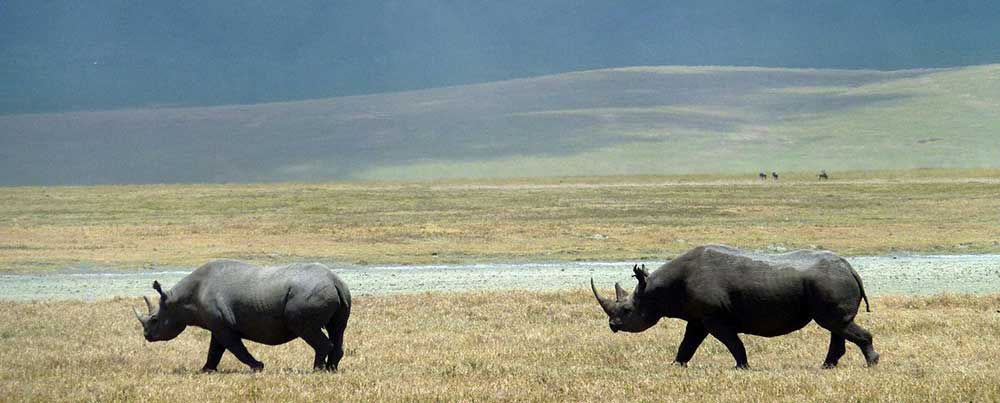
The Ngorongoro Conservation Area (NCA) is a UNESCO World Heritage Site situated 180 km (112 miles) west of Arusha in the Crater Highlands area between Lake Manyara and Serengeti National Parks. Covering approximately 8,288 square km, the Ngorongoro Conservation Area consists of the Ngorongoro Crater itself, the Olduvai Gorge and Ndutu, the Empakai crater and the Oldonyo Lengai Mountain. The Ngorongoro Conservation Area is a pioneering experiment in multi-purpose land use where people (the Maasai), their livestock and wildlife coexist and share the same protected habitat. Best time; All the year round except the rainy season that is between November and May.
Tour Attractions
Wild animals are protected as in the National Parks. The craters of Ngorongoro and Empakai are reserved exclusively for wildlife, while the rest of the Conservation Area is shared by wildlife including wildebeest, zebra, gazelles, elands, rhino, and a large predator population of lions, hyena and jackal which can all be viewed at close quarters, people and livestock. The Maasai, the main residents of Ngorongoro, are pastoralists who move widely with their herds of cattle, sheep, goat and donkeys in search of pasture and water. In recent years the Maasai have been encouraged to work on the land and supplement their traditional diet of milk, blood and meat. The Ngorongoro Crater, which is the central attraction in the area, is the largest Caldera in the world that has its walls intact. The Ngorongoro Crater floor, a sheer drop of 610 metres below the crater rim, has an area of 265 sq. km, with a diameter of 19 km. The sight of the Ngorongoro Crater is simply stunning.
